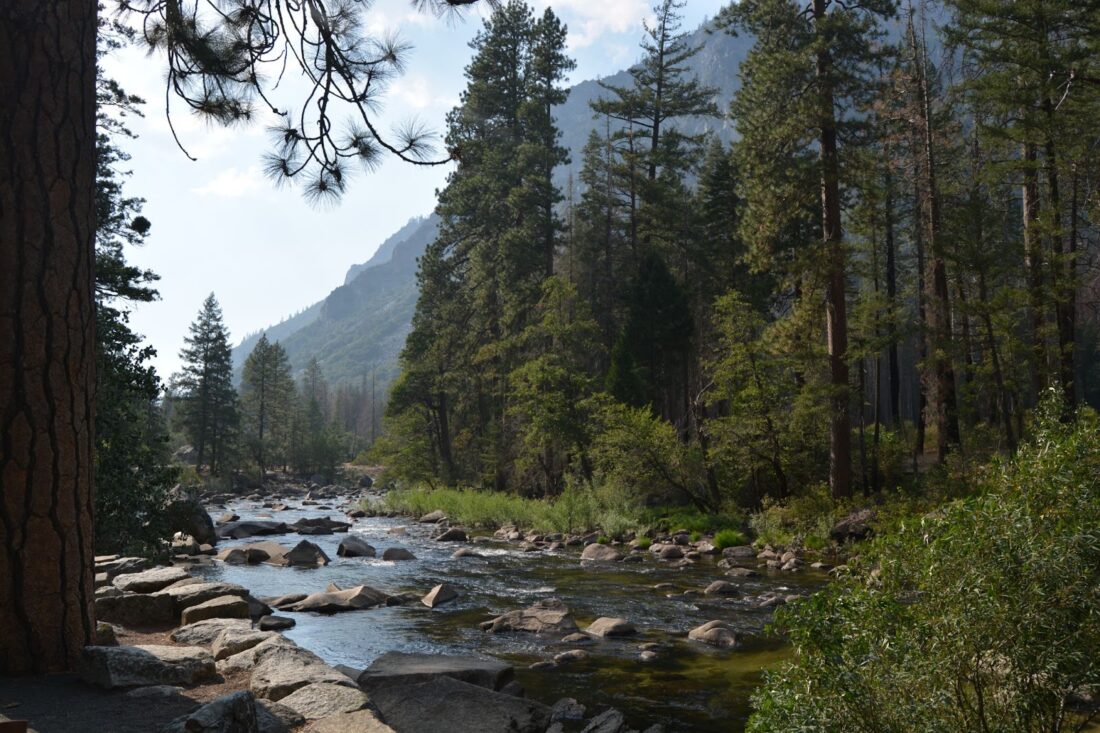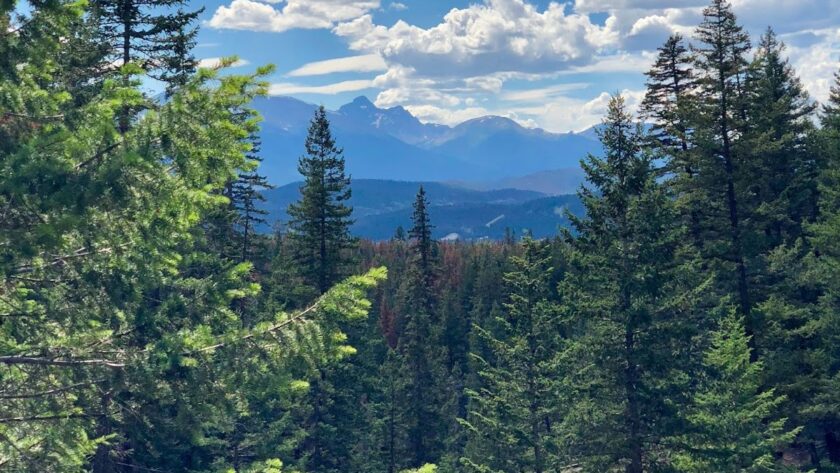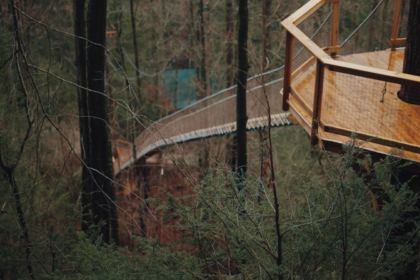Immersed in a tapestry of vibrant history and resplendent landscapes, the Commonwealth of Kentucky stands adorned as the Bluegrass State. Nestled between the grandeur of the Appalachian Mountains and caressed by the embrace of three meandering rivers, it is a realm unsurprisingly adorned with an array of outdoor pursuits and sanctified national enclaves.
Venturing forth, one may delve into the annals of time, unearthing the echoes of yesteryears within the cradle of Kentucky’s national parks and hallowed historical trails. These sacred grounds pay homage to pivotal junctures, embodying the likes of Abraham Lincoln’s seminal genesis and the resonant echoes of Civil War conflicts.
In succinct summation, be it an aficionado of history’s narratives or an ardent devotee of nature’s grandeur, each soul shall undoubtedly uncover a trove of delights amidst Kentucky’s cherished national panoramas. Thus, with bated breath, we present our paramount selections, a constellation of national parks that beckon unwaveringly in the heart of KY’s embrace, an offering too precious to forego upon your sojourn through the realm of Kentucky’s allure.
Exploring Kentucky’s Rich Historical National Parks
Abraham Lincoln Birthplace National Historical Park
Location: Hodgenville
Nestled amidst the serene landscapes of rural central Kentucky, the Abraham Lincoln Birthplace National Historical Park stands as a poignant tribute to the life and legacy of the 16th President of the United States, Abraham Lincoln.
This sprawling park encompasses two significant sites: the birthplace of Abraham Lincoln and the grounds of his boyhood home. Immerse yourself in history as you step into a meticulously recreated cabin, evoking the very setting in which Lincoln took his first breath. Wander through the hallowed grounds where he spent his formative years, connecting with the essence of a young Lincoln.
For an in-depth understanding of Lincoln’s upbringing, embark on the Knob Creek Farm tour, an immersive journey that unravels the story of his childhood. Traverse the very terrain that shaped his character and values between the tender ages of 2 and 8, gaining insights into his early life and experiences.
Top 5 Best National Parks to Visit in Kentucky | India – English
Nature enthusiasts and outdoor adventurers are in for a treat, as the park boasts enchanting hiking trails that wind through its picturesque terrain. Sturdy footwear is essential to fully appreciate the captivating vistas and natural beauty that unfolds along these pathways. To start your exploration on an informed note, make a point to visit the Visitor Center. Here, you’ll find a wealth of knowledge, engaging exhibits, and engaging programs that shed light on Lincoln’s life and the historical significance of the park.
One of the park’s unique features is Sinking Spring, a tranquil oasis nestled beneath a gentle hill. Legend has it that this spring quenched young Lincoln’s thirst, serving as a lifeline for his family’s water needs. The echoes of history resonate through the water’s gentle flow, a testament to the humble beginnings of a remarkable leader.
Visiting hours extend from 9 AM to 5 PM, welcoming visitors seven days a week to delve into the depths of Lincoln’s heritage. While planning your excursion, be sure to check the park’s website for comprehensive information, especially regarding holiday closures. Remarkably, there are no entrance fees associated with accessing either segment of this historically significant park.
Big South Fork National River & Recreation Area
Location: Southeastern Kentucky
Spanning an expansive 125,000 acres of untamed wilderness, the Big South Fork National River & Recreation Area emerges as an outdoor haven in southeastern Kentucky, inviting adventurers to partake in an array of exhilarating activities amidst its rugged gorges and enchanting woodlands.
The heart and soul of this majestic park lies in the Big South Fork of the Cumberland River and its tributaries, including Clear Fork, North White Oak, and New River. Brave souls seeking an adrenaline rush can embark on whitewater paddling expeditions, navigating these waterways that offer varying levels of challenge. However, it’s crucial to exercise caution, as the unpredictable currents demand respect and skill.
Thrill-seekers with a passion for scaling heights will find their calling amidst the park’s vast cliffs. An extensive network of cliffs beckons rock climbers, but it’s essential to equip oneself with proper safety gear and knowledge, as this pursuit demands a high degree of expertise.
As the sun’s rays filter through the forest canopy, hiking enthusiasts are spoiled for choice with an intricate trail system that meanders through the park’s heart. From leisurely strolls suitable for all ages to invigorating treks that immerse seasoned hikers in the wild embrace of nature, the trails cater to a spectrum of preferences and skill levels. The park offers a comprehensive map, meticulously detailing these trails across nine distinct sections, ensuring you embark on the perfect route for your desired experience.
For those craving an extended communion with nature, backcountry camping is a tantalizing option within the Big South Fork. Embrace the enchantment of multiple days spent in the heart of this pristine wilderness, where the symphony of crickets and rustling leaves lulls you into a serene slumber under the star-studded canopy.
The park’s gates remain open around the clock, inviting you to embrace its allure at any time of day. What’s more, the experience comes without the burden of entrance fees, making it accessible to all who yearn for an authentic rendezvous with the great outdoors.
Camp Nelson National Monument: A Historical Gem in Nicholasville
Nestled in the heart of Nicholasville, the Camp Nelson National Monument stands as a testament to the pivotal role it played during the tumultuous era of the Civil War. Originally established as a bastion of support and medical care for the United States Army, Camp Nelson quickly evolved into a monumental hub of transformation.
As the war progressed, Camp Nelson metamorphosed into a bustling center for recruiting and training African-American soldiers. Beyond its military function, it emerged as a sanctuary for the families of these soldiers, offering a haven for wives and children who sought refuge from the horrors of the era. The monument today proudly preserves this multifaceted legacy, allowing visitors to immerse themselves in the history that unfolded within its grounds.
Camp Nelson National Monument, proudly taking its place as Kentucky’s inaugural national monument, opens its gates to all who wish to explore its rich history. The Visitor Center and museum serve as beacons of knowledge, unraveling the intricate tapestry of events that shaped this remarkable site. Beyond its educational offerings, the monument’s expansive grounds bear witness to its multifarious roles—be it a military stronghold, a supply depot, a healing haven, a recruitment epicenter, or a safe haven for families.
Visitors are invited to traverse the network of hiking trails that crisscross the monument’s landscape, retracing the very steps of the soldiers who once trod upon these hallowed grounds. Each trail unveils a chapter of history, inviting contemplation and connection to the past. Among these trails lies the Camp Nelson National Cemetery, a solemn resting place for 1,615 soldiers who made the ultimate sacrifice. Adjacent to this poignant space stands a quaint church, an emblem of the enduring spirit that permeates this site.
The naming of the monument pays homage to John Fee, a visionary advocate for African-American education. His indelible impact echoes through time, etching his name into the narrative of Camp Nelson’s significance.
Delving into this historical oasis is facilitated by the Visitor Center and Museum, open from Wednesday to Friday, 9 AM to 5 PM. Meanwhile, the monument’s sprawling beauty, as well as its hiking trails, welcomes exploration from sunrise to sunset every day. The magnanimity of Camp Nelson extends to its accessibility—there is no admission fee, ensuring that the lessons of the past remain accessible to all.
Cumberland Gap National Historical Park: Where Nature and History Converge
Nestled in the southeastern corner where the boundaries of Tennessee, Kentucky, and Virginia coalesce, Cumberland Gap National Historical Park emerges as a breathtaking mosaic of nature and history. This pristine expanse promises an immersive journey through time and landscape, intertwining the legacies of indigenous peoples and pioneers against a backdrop of awe-inspiring vistas and botanical wonders.
Long before the park’s establishment, Native Americans traversed these lands, forging a primitive trail that would later be transformed into the legendary Wilderness Road during the 18th century. This transformation marked the gateway to new horizons, a conduit for settlers who sought to tame the wild frontier.
In the embrace of Cumberland Gap National Historical Park, adventure enthusiasts find themselves spoiled for choice. The sprawling landscape boasts an extensive network of trails, spanning over 85 miles, leading intrepid explorers through enchanted groves of hemlock, fields teeming with resplendent wildflowers, and meadows adorned with the vibrant hues of rhododendron and fiddle greenery. Each step resonates with the echoes of those who journeyed before, lending an air of camaraderie with pioneers of old.
Among the park’s treasures lies the enigmatic Gap Cave, an ethereal subterranean wonder. Guided tours, led by knowledgeable park rangers, unveil the subterranean marvels that have been carved by nature’s patient hand. An experience within the Gap Cave is a coveted endeavor, and it is advised to secure reservations in advance, given its popularity.
Cumberland Gap National Historical Park extends its embrace to cycling enthusiasts, permitting cycling within its bounds. Pedaling through the scenic wonders adds a dynamic dimension to the exploration, offering an intimate connection with the natural beauty that abounds.
The park, a sanctuary where history and nature harmoniously entwine, opens its gates around the clock, 365 days a year. With a spirit of inclusivity, there are no entry fees, ensuring that Cumberland Gap’s narrative remains freely accessible to all who seek to unearth its treasures.
Fort Donelson National Battlefield: A Historical Gem overlooking Kentucky Lake
Nestled majestically atop a commanding peak, Fort Heiman emerges as a testament to the Civil War era, standing sentinel over the pristine waters of Kentucky Lake. Part of a trio of formidable forts, it played a pivotal role in safeguarding the vital conduits of the Tennessee and Cumberland Rivers, while its strategic rail line underscored its importance in the theater of war.
A fateful clash unfolded over the course of an intense 1.5-hour battle, during which the valorous Confederate soldiers prevailed, compelling the Union forces to yield, their retreat a desperate bid to evade capture. Triumph, however, proved to be transient, for the Union’s resolute retaliation encircled the fort in the subsequent days, culminating in the definitive Union victory at Fort Donelson.
Today, the vestiges of Fort Donelson stand as an indelible historical treasure, enshrined within the embrace of the Kentucky Lake region. As a revered national park, its panoramic vista overlooking the meandering Cumberland River serves as a living testament to a bygone era steeped in valor and sacrifice.
Within these hallowed grounds, the echoes of valor resonate, for it was here that many a valiant soldier took their final stand. In the present day, Fort Donelson provides an immersive educational odyssey catering to all generations, fostering a profound understanding of the human narratives woven into its storied fabric.
Enthusiasts and history aficionados are afforded the opportunity to embark on the Fort Donelson Autotour—an enlightening expedition that offers a comprehensive exploration of this historic bastion. Immerse yourself in the compelling narrative while traversing the very paths once trodden by those who forged history amidst the thunderous echoes of conflict.
A compelling tableau awaits, as guests marvel at the meticulously crafted Confederate artillery batteries that stood resolute in the defense of the Cumberland River. These silent sentinels tell tales of courage and unwavering dedication, underscoring the intricate dance of power that unfolded upon these grounds.
For those seeking a more immersive encounter, a meticulously preserved 19th-century hotel graces the landscape, offering a poignant glimpse into the past. Within its walls, a single room extends an open invitation to visitors, inviting them to partake in interpretive exhibits and captivating short films that delve into the multifaceted significance underpinning the battle’s architectural tapestry.
The gates of Fort Donelson National Battlefield remain ajar to curious minds and history enthusiasts every day, from the earliest rays of dawn at 8 AM to the gentle embrace of twilight at 4:30 PM. As testament to its enduring legacy, the park extends a gracious welcome without the burden of entrance fees, inviting all to partake in an odyssey through time.
Lewis & Clark National Historic Trail: A Voyage of Discovery Across 16 States
The Lewis and Clark National Historic Trail beckons intrepid souls on a transcendent journey that spans an awe-inspiring expanse of 4,900 miles, tracing an epic arc from the bustling urbanity of Pittsburgh, Pennsylvania, to the untamed splendor of the Columbia River’s estuary near Astoria, Oregon.
Inscribed upon this venerable trail are the footprints of the intrepid Lewis and Clark Expedition, whose outbound and return voyages are encapsulated in every mile traversed. The expedition’s voyage is further anchored by the historic stretch spanning Pennsylvania to Wood River, Illinois, providing an encompassing narrative that transcends time.
A labor of legislative foresight, the trail’s inauguration in 1978 interlaces the tapestry of 16 states, each a distinct chapter in the unfolding saga. As pilgrims traverse its meandering passages, verdant meadows whisper secrets of a bygone era, while the encompassing embrace of primeval forests beckons to the wandering spirit.
Beyond the realm of pedestrian pursuits, the trail extends an invitation to mount steeds and embark on a journey astride noble companions, granting a unique perspective to those seeking an alternative to traditional hiking. Venture forth on horseback, forging a bond with the landscape that resonates with the echo of pioneers’ resolve.
For those seeking aquatic exploits, the trail unfurls an array of delights, from the adrenaline rush of whitewater rafting to the rhythmic serenity of canoeing, all against the backdrop of nature’s sublime grandeur. In the embrace of winter’s grasp, a new facet of the trail unfolds, enticing visitors to carve fresh tracks upon snowy landscapes through skiing and snowshoeing.
Adventurous souls on two wheels can chart their course along the rugged byways that once bore witness to Lewis and Clark’s courageous passage, imprinting the trail with their determination and resilience.
From the gentle commencement of morning at 9:30 AM to the gradual surrender to dusk at 5 PM, the Lewis and Clark Trail extends an open invitation, unfettered by the imposition of entrance fees.
Mammoth Cave National Park: Beneath the Sublime Wilderness
Nestled close to Bowling Green, the breathtaking expanse of Mammoth Cave National Park was established in Kentucky with a profound purpose – to safeguard not only the world’s most extensive underground cave system but also the undulating hills that enshroud it and the serene Green River Valley that flows nearby.
Encompassing an impressive 53,000 acres, this natural wonderland stands as one of Kentucky’s most alluring attractions. It beckons adventurers and nature enthusiasts alike, offering an array of enthralling activities that cater to diverse tastes and inclinations. Embark on invigorating hikes through verdant trails, partake in awe-inspiring cave tours that delve into the mysterious depths of the earth, set up camp beneath a canopy of stars, paddle along the meandering waters of the Green River, or relish tranquil picnics in the midst of this pristine landscape.

The cave tours themselves form a fascinating tapestry of experiences, with prices varying from $12 to $66, contingent upon factors such as your age group and the specific type of tour you seek. Each subterranean journey unfurls a unique narrative, revealing the hidden secrets of this enigmatic realm that has evolved over millennia.
For those seeking respite and convivial gatherings, the park provides thoughtfully designed picnic shelters, each equipped with ten tables and a welcoming fireplace. Open-air shelters offer a charming al fresco experience at a daily rate of $55, while enclosed options provide a cozier atmosphere for $80 per day.
For the intrepid souls seeking an immersive camping experience, the park presents three distinct campgrounds, each offering its own allure. Be mindful that these campsites, while offering an unforgettable communion with nature, come at a nominal fee ranging from $20 to $50, contingent upon the chosen site and its dimensions.
Anglers and canoers will find solace in the tranquil embrace of the Nolin River, where they can while away the hours in pursuit of aquatic treasures. Meanwhile, hiking and biking enthusiasts can traverse an intricate network of trails that lead to captivating vistas and poignant markers of history’s passage.
Mammoth Cave National Park extends an open invitation to all, unveiling its grandeur 24 hours a day, every day of the year. Step into this realm of natural wonder and embark on an odyssey that intertwines thrill, serenity, and discovery.
Mill Springs Battlefield National Monument: Echoes of Valor and Sacrifice
Located in the heart of Nancy, the Mill Springs Battlefield National Monument stands as a living testament to an epoch-defining clash that reverberated through history – the Battle of Mill Springs in 1862. This pivotal encounter marked a turning point for the Union during the tumultuous era of the Civil War, culminating in a triumphant victory that resonated across the land. In 1993, the battlefield ascended to the echelons of distinction as a revered US National Historic Landmark, forever enshrining its significance.
At the heart of this hallowed ground lies the Mill Springs Battlefield Visitors Center and Museum, an edifice dedicated to elucidating the multifaceted tale of valor, strategy, and sacrifice that unfolded on these very plains. Immerse yourself in the immersive narratives chronicled within its walls, augmented by a captivating short film that breathes life into the saga of the Battle of Mill Springs.
The museum, a haven of historical enlightenment, opens its doors to seekers of knowledge from 10 AM to 4 PM every Wednesday through Sunday. For those yearning to traverse the battle-scarred terrain and unearth its hidden secrets, the Mill Springs Battlefield Association orchestrates driving tours marked by ten evocative stops, each bedecked with informative markers that unfurl the layers of history that permeate the air.
Venturing further, visitors are invited to tread upon a trail adorned with over 14 interpretative signs, encapsulating the essence of the battlefield’s import and the struggles that once raged upon its soil. As you wander, these markers serve as poignant reminders of the sacrifices rendered and the indomitable spirit that endured.
Within the confines of Mill Springs, two storied dwellings stand as living witnesses to the past. The venerable Brown-Lanier House, a focal point of strategic command during the battle, and the newly revitalized West-Metcalfe House, a sanctuary of healing in the aftermath of conflict, invite curious minds to embark on guided tours every Friday and Saturday between 10 AM and 4 PM. The privilege of partaking in these enlightening journeys is bestowed at a nominal fee of $2 per person.
Trail of Tears National Historic Trail: Commemorating Resilience Amidst Tragedy
In the vast expanse of Western Kentucky, a poignant historical saga finds its eternal sanctuary in the Trail of Tears National Historic Trail. This solemn corridor once bore witness to the harrowing journey of nearly 16,000 Native Americans, forcibly uprooted from their ancestral homelands in 1838. This forced exodus, originating from the states of Tennessee, Alabama, North Carolina, and Georgia, culminated in the arduous trek to the present-day territory of Oklahoma, an odyssey marked by incalculable suffering and profound loss.
The trail itself is a living testament to the indomitable spirit of the Cherokee tribe, honoring the memory of those who perished along its arduous path. Amidst the tranquil vistas and serene natural beauty, this hallowed ground stands as a somber reminder of the resilience and endurance that defined this tragic chapter in history.
In the present day, the Trail of Tears National Historic Trail offers a haven for modern-day explorers, beckoning them to engage in an array of experiences that pay homage to the past while celebrating the vitality of the present. The canvas of offerings includes opportunities for camping beneath the starlit canopy, embarking on invigorating hikes that traverse sacred landscapes, seeking solace by the shores of a serene lake, and basking in the sun’s embrace upon a picturesque swimming beach.
The trail’s network of hiking paths serves as a poignant conduit to the past, allowing contemporary pilgrims to traverse the same routes that once bore the weight of profound sorrow and unwavering hope. Along these pathways, poignant interpretative signs serve as both markers of history and beacons of enlightenment, unraveling the intricate tapestry of the Trail of Tears.
Notably, the Trail of Tears National Historic Trail extends an open invitation to all, devoid of an entrance fee. However, it is prudent to bear in mind that trail-related, state, or locally-owned historic sites may levy their own nominal charges, further enriching the exploration of this significant chapter in America’s narrative.
Conclusion
In conclusion, Kentucky’s national parks stand as remarkable testament to the state’s rich natural and cultural heritage, offering a diverse range of experiences for visitors of all interests. From the ancient geological wonders of Mammoth Cave National Park to the breathtaking beauty of the Cumberland Gap and the historical significance of Abraham Lincoln’s birthplace, these protected areas provide a glimpse into the past while inviting us to appreciate the present beauty of the natural world.
Through careful preservation and management, Kentucky’s national parks contribute not only to the conservation of unique ecosystems and species but also to the education and enjoyment of countless individuals. These parks serve as outdoor classrooms, inspiring visitors to learn about the intricate relationships between humans and their environment, fostering a sense of stewardship and responsibility for the land.
Tim Absalikov is an expert digital marketer with significant experience in marketing for small and large law firms. He holds bachelor’s degrees in Computer Science and Economics and has held impressive positions such as a Digital Marketing Director and Senior SEM Account Manager. Presently, he is Lasting Trend’s acting CEO.




